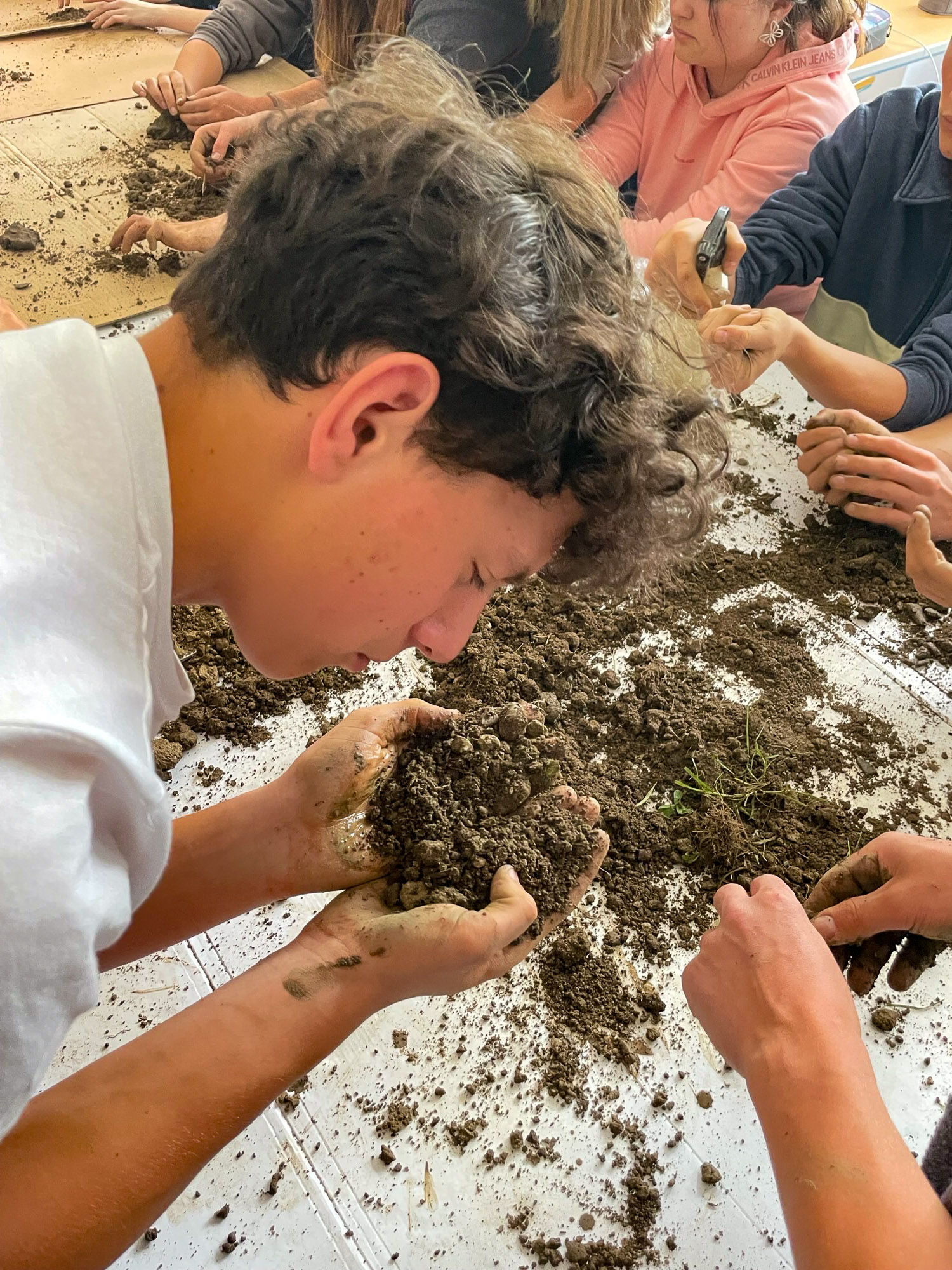A rough determination of the soil type is carried out using a finger sample:
- Cohesiveness :
Take a few decagrams of soil, moisten it a little when it is completely dry and squeeze it in your hand. This involves assessing whether the compressed piece of soil is cohesive or not and therefore falls apart easily. - Malleability :
Then you try to shape the soil between both palms, first into a ball, then into a roll. This shows whether it can be rolled out or not. - Surface condition :
The soil is then compressed and the surface is examined. If it shines, this indicates the presence of silt and clay particles. - Roughness :
You take a little bit of soil and rub it between your thumb and forefinger to feel if there is any sand in it. If this is the case, the floor feels rough. - Subtlety :
Ultimately, after working, you look at your fingers to see whether clay has settled into the pores of the skin and is difficult to wash out.
Sand is not cohesive
Sandy clay is cohesive, but cannot be rolled out
Clay can be rolled out, sand is moderately noticeable, dull sliding surfaces
Clay can be rolled out, high-gloss sliding surfaces, sticks in the pores and grooves of the hand, the individual particles cannot be felt.
The richer in sand a soil is, the “lighter” (workable) it is - the richer in clay a soil is, the “heavier” (workable) it is.
After this teaching unit, the students can identify and distinguish between light, medium and heavy soils using a finger test.










